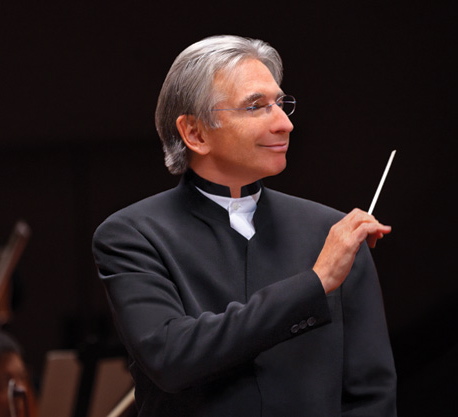MTT, New World serve up a bracing blast of Italian modernists

Michael Tilson Thomas led the New World Symphony in a program of 20th-century Italian music Friday night at New World Center.
Italy’s towering role in music history can sometimes make it appear the country’s contribution ended with Puccini.
But a concert Friday by the New World Symphony, called “Italian Innovators,” highlighted Italian music from the second half of the 20th-century, with some compositions that were memorable, others not. Although performances of modern music can be tough box office, this event was completely sold out. Adding glamour to the evening were celebrity guests, including composer David Del Tredici and architect Frank Gehry, who designed the orchestra’s new home in Miami Beach and received a standing ovation for his efforts.
The concert at New World Center opened with a single player, Melanie Lançon, in Luciano Berio’s Sequenza I for solo flute. One of a long series of works he composed for solo instrument, this work tackles the problem of how to write for an instrument that usually requires accompaniment by using extremely rapid figures, trills and other techniques to create the aural feeling of a harmonic texture. Lançon, a New World member, negotiated the work’s formidable technical difficulties in a cool, assured manner.
The most intriguing work on the program was Niccolo Castiglioni’s 1973 work Inverno In-ver, a brittle, wintry work for chamber orchestra. In a brief introduction, Michael Tilson Thomas said the work sounded as if Alban Berg had recomposed Tchaikovsky’s Nutcracker, saying “This is my kind of Christmas music.”
The work, in which traditional melodies are swamped in a sea of weird harmonies and shrieking orchestrations, did have a Nightmare Before Christmas quality. In 11 short movements with titles like “The Flowers of Ice” and “The Frozen Lake,” Castiglioni creates an atmosphere of cold, with the warmth of folk melodies continually trying to push through the icy blasts of wind instruments and percussion. The apparent formlessness of some of the music seemed to impart extra power to artistic director Tilson Thomas, who like a black-clad conjurer called forth the music and then, with a wave of the hand, made it vanish.
Giancinto Scelsi’s 1968 work Okanagon was performed on one of the auxiliary stages mounted off to the side above the audience. Composed for harp, double bass and tam-tam (a pair of large gongs), the work consisted mainly of slow, dirge-like repetitions of single notes, as the three instruments explored the possibilities for variation within that pattern. Quarter tones are employed along with tapping on the bass and harp to provide variety, sounding like some sort of tribal funeral music. Scelsi’s piece had a certain hypnotic quality through its repetition but not enough musical interest to justify its length.
Having been born and raised in California, the composer David Del Tredici doesn’t precisely fit into the concert’s category of Italian-born innovatora. And his 1966 work Syzygy might surprise those more familiar with the tonal warmth of his later Neo-Romantic compositions.
Consisting of two settings of texts by James Joyce, this work for soprano, horn and small orchestra is cast in an astringent, tonally ambiguous style, one not exactly brimming with hummable melodies. The soprano Kiera Duffy plunged exuberantly into the work, using her voice almost like a percussion instrument in repeated notes, and easily handling its wide tonal leaps. She was ably accompanied on the solo horn by New World member Alexander Kienle.
Posted in Performances
Leave a Comment
Sat Dec 3, 2011
at 1:15 pm
No Comments






